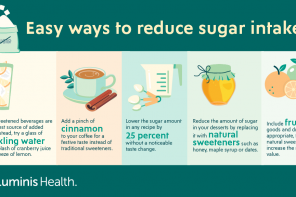Many of us are still working and learning virtually from home. That’s why this is a good time to take a closer look at your child’s (and your own!) relationship with snacking. A good rule of thumb is to keep it simple. To do that, ask the four ‘w’s’ – why, when, where and, most importantly, what.
Why is your child looking for a snack? Snacks are important to help your child meet nutritional needs for overall health. But, if they are seeking snacks more frequently, it’s fine to ask them if they might be feeling something other than hunger. For example, feelings of stress or anxiety, boredom or loneliness, thirst or fatigue can bring about food cravings. If one is an issue, be sure to address the underlying problem.
When does a snack make sense? Snacks are important to help children meet their nutritional needs. It helps them stay focused and gives them energy to get through a busy day. In general, children and teens need to eat every three to four hours during the day. Younger kids need at least two snacks a day. Older kids/teens need at least one (two or more if they are participating in sports or going through a growth spurt). The timing of snacks is important, too. You want your child to have an appetite for their meals and not get in a habit of grazing throughout the day only to refuse food at mealtime. Consider offering a snack a few hours after one meal ends and an hour or two before the start of the next meal. Offer meals and snacks at predictable times.
Where should you eat a snack? Make snacking an eating event. Have specific areas in your home where snacking takes place. For example, the kitchen table, the counter or a table outside during nice weather. Research shows that when kids snack while doing other things, such as watching TV or studying, it can lead to overeating. And when your child eats all over the house, you’re less likely to be aware of what or how much they are eating.
What to eat as a snack? The nutritional choices you and your children make are crucial. Good nutrition is essential to good health. Parents need to think about food choices as health decisions for their children. Think of snacks as “mini meals.” Try to make 50% of a snack a fruit or vegetable. Add in a high fiber grain, like whole grain cereal or bread. Or add in lean protein, like sliced turkey or peanut butter. This will keep their tummies happy until the next meal or snack.
Additional tips for healthy snacking
- Involve your children in age-appropriate meal and snack planning and preparation.
- Keep produce in plain sight. For example, a bowl of fruit on the counter or table.
- Have cut veggies and fruit in baggies or on a plate in the refrigerator.
- Purchase frozen fruit for a quick smoothie.
- Prepare small portioned containers of trail mix or dry cereal.
- Keep small yogurts and cheese sticks on hand.
- Try baked chips with homemade salsa or bean dip.
- Roast some chickpeas or kale chips.
- Prepare mini bagels with nut butter and a banana.
Your turn! Prepare a yogurt parfait with your child Set up a yogurt parfait bar. Place all the ingredients on the table and have your children make their own yogurt parfaits. It can be a fun and nutritious snack activity. You will need: Start with yogurt in the bottom of the glass or bowl and alternate layers of cereals, fruit, seeds and nuts. Enjoy!
Ann Caldwell is a nutritionist and registered dietitian at Anne Arundel Medical Center. To reach her, call 443-481-5555.




